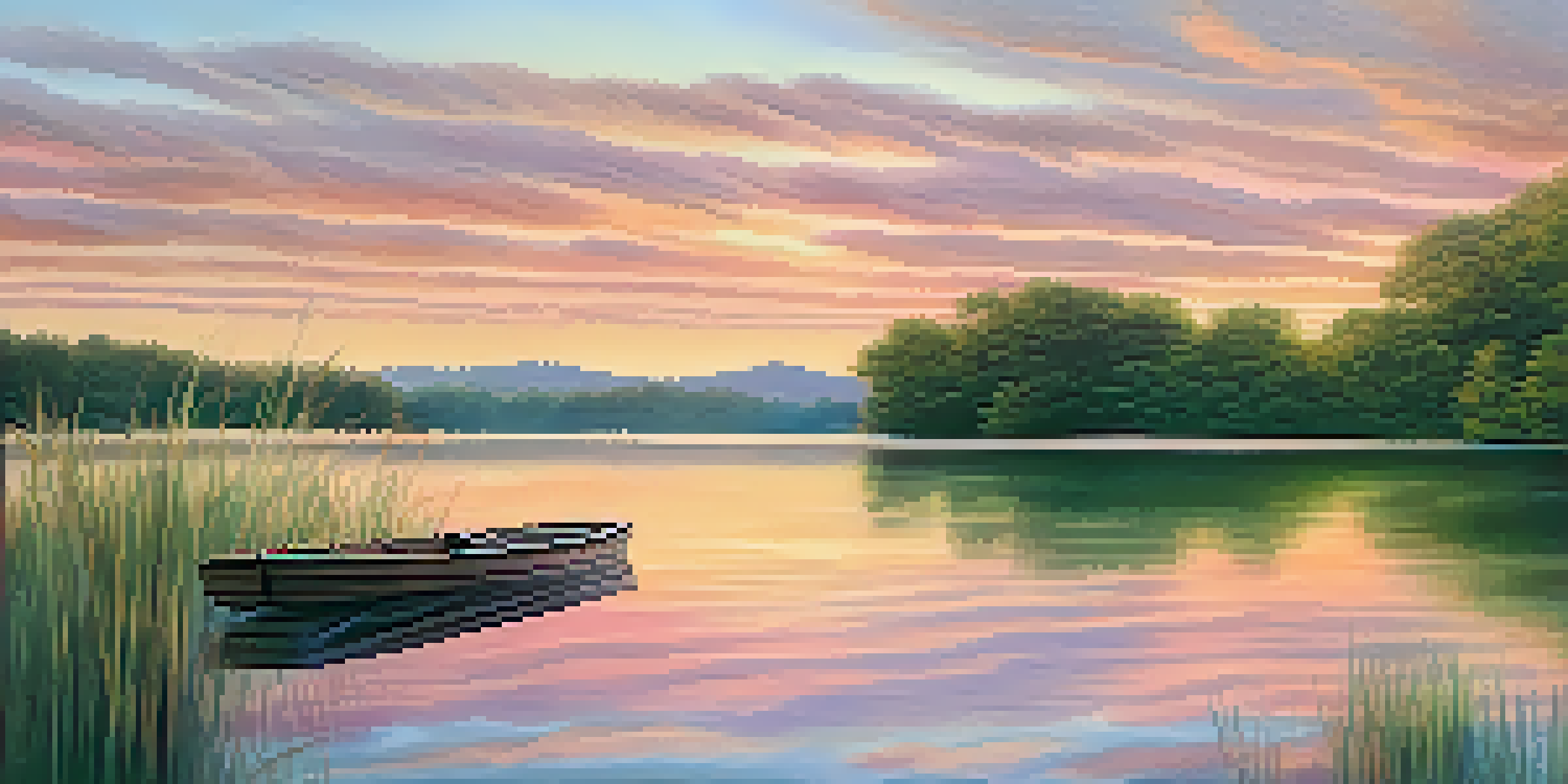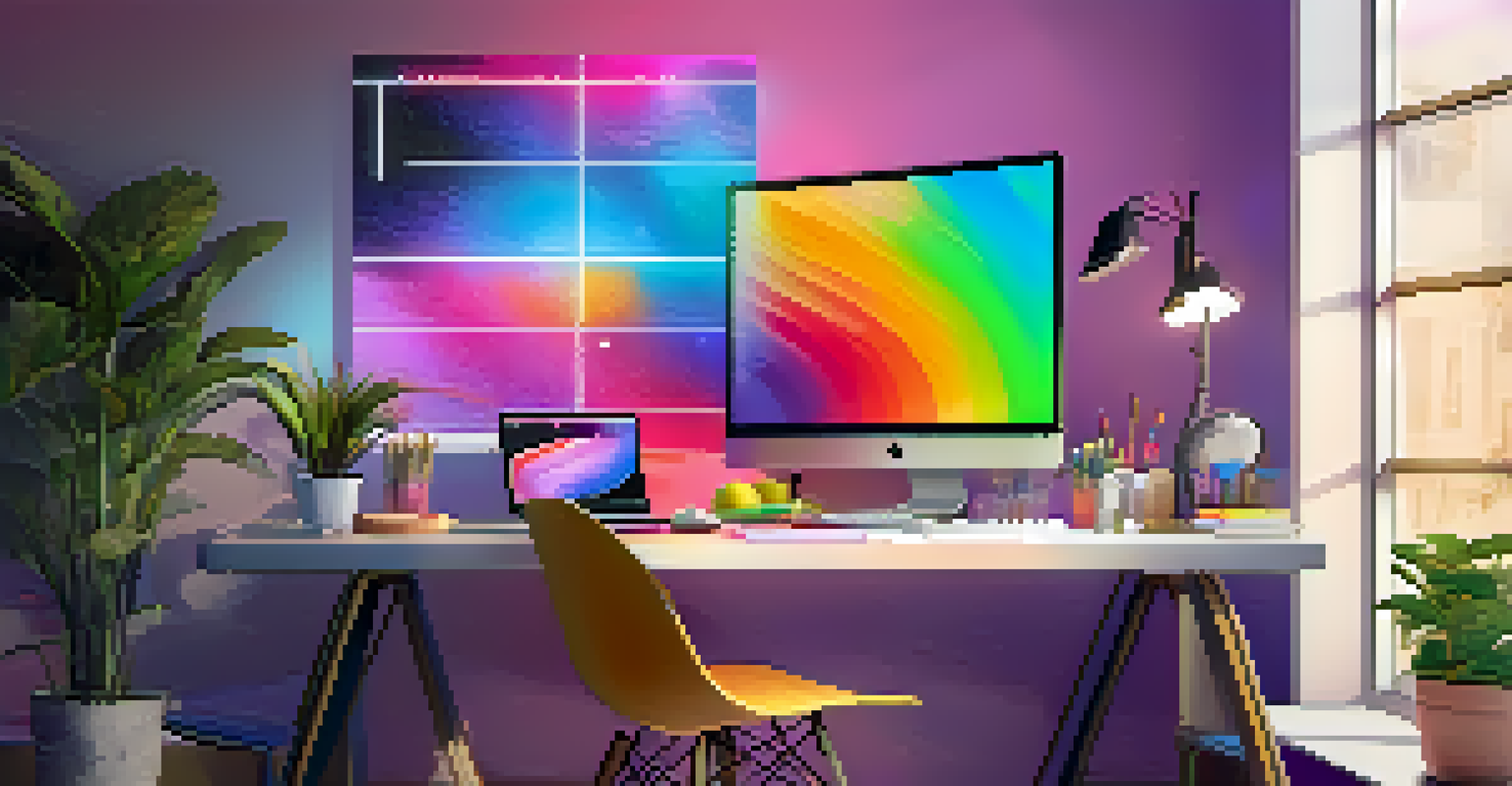Exploring Different Mediums: Impact on Artistic Process

Understanding the Concept of Artistic Mediums
When we talk about artistic mediums, we refer to the materials and methods artists use to create their work. This can range from traditional paints and clay to digital tools and mixed media. Each medium has its own unique characteristics that can significantly influence the final artwork and the artist’s approach.
Art is not freedom from discipline, but disciplined freedom.
For instance, painting with oil offers a different texture and depth compared to watercolor. Similarly, sculpture can be created from stone, metal, or even recycled materials, each providing a distinct tactile experience. Understanding these differences is crucial for artists as they explore their creative boundaries.
In essence, the choice of medium is not just a technical decision; it’s an integral part of an artist's identity and expression. The medium often dictates the mood, style, and message of the artwork, making it essential to grasp its impact on the artistic process.
How Mediums Influence the Creative Process
The medium an artist chooses can significantly influence their creative process. For example, working with charcoal might encourage spontaneity and quick sketches, while oil paints allow for more detailed and layered work. This interaction often leads to a dynamic relationship between the artist and their chosen materials.

Moreover, the limitations of a medium can spark creativity. An artist might find that a challenging medium leads them to develop new techniques or perspectives. This adaptability can push artists beyond their comfort zones, ultimately enhancing their skills and expanding their artistic vocabulary.
Artistic Mediums Shape Expression
The choice of artistic medium significantly influences an artist's identity, mood, and message in their work.
Ultimately, the creative process is a dance between intention and medium. Artists learn to navigate the strengths and weaknesses of their chosen materials, leading to unique outcomes that reflect their personal journey.
Exploring Traditional Mediums: A Timeless Approach
Traditional mediums, such as oil painting, watercolor, and charcoal, have been used for centuries and continue to inspire artists today. These mediums offer a sense of history and depth that many find comforting and inspiring. Artists often feel a connection to the masters who used these same materials before them.
Every artist was first an amateur.
For example, an artist using oil paints might experiment with glazing techniques to create luminous effects, echoing the works of legendary painters like Rembrandt. This connection to tradition can encourage artists to explore their own interpretations and styles while respecting the art form's rich heritage.
Moreover, traditional mediums often come with a learning curve, requiring patience and practice. This journey of mastering techniques can foster a deeper understanding of color, composition, and texture, which enriches the artist’s overall skill set.
The Rise of Digital Mediums in Art
In recent years, digital mediums have transformed the landscape of artistic expression. Tools like graphic tablets and software applications allow for a new level of flexibility and experimentation. Artists can create, edit, and share their work instantly, breaking down geographical barriers and reaching a global audience.
One significant advantage of digital art is the ability to work in layers, making it easier to revise and refine ideas without starting from scratch. This feature can lead to a more iterative creative process, where artists can explore multiple concepts quickly before settling on a final piece.
Digital Art Expands Creative Horizons
The rise of digital mediums allows artists to experiment freely and connect with a global audience.
However, the shift to digital also presents challenges, such as the need to stay updated with rapidly evolving technology. Yet, many artists find that blending traditional techniques with digital tools can enhance their creative output, resulting in a unique fusion of styles.
Mixed Media: Combining Elements for Unique Art
Mixed media art combines various materials and techniques to create multidimensional pieces. This approach allows artists to break free from the constraints of a single medium, fostering a more experimental mindset. For instance, an artist might use paint, fabric, and found objects to create a rich, textured collage that tells a story.
The beauty of mixed media lies in its versatility. Artists can layer different mediums to achieve unique visual effects and convey complex themes. This experimentation can lead to unexpected discoveries and inspire new directions in their work.
Ultimately, mixed media challenges the notion of what art can be, encouraging artists to think outside the box. It opens up a dialogue about the materials we use and how they can interact to create meaning, allowing for a deeper connection between the artist and the viewer.
The Emotional Resonance of Different Mediums
Different mediums can evoke various emotions and responses, both in the artist and the audience. For instance, the fluidity and transparency of watercolor can create a sense of calm, while the bold strokes of acrylic might convey energy and passion. Understanding these emotional qualities can help artists choose the right medium for their intended message.
An artist might find that working with clay provides a tactile experience that fosters mindfulness, while digital art allows for a more detached, analytical approach. This emotional resonance can significantly impact how an artist connects with their work and the stories they wish to tell.
Emotional Impact of Art Mediums
Different artistic mediums evoke varied emotions in both artists and audiences, affecting the overall experience of the artwork.
Moreover, audiences often respond differently to various mediums. A sculpture made from recycled materials may provoke thoughts on sustainability, while a vibrant canvas might ignite feelings of joy. Artists must be aware of these emotional cues as they navigate their creative journeys.
The Future of Artistic Mediums
As technology continues to evolve, the future of artistic mediums is bound to change. From virtual reality art experiences to AI-generated pieces, the possibilities are expanding in unprecedented ways. Artists are now finding innovative ways to blend traditional techniques with cutting-edge technology, leading to exciting new forms of expression.
This evolution invites artists to explore and redefine their practices continually. The integration of new tools can enhance creativity and offer fresh perspectives on age-old themes. Artists are encouraged to remain open-minded and adaptable as they navigate this shifting landscape.

Looking ahead, the challenge will be balancing the use of technology while preserving the essence of artistic expression. Regardless of the medium, the core of art remains the same: a reflection of human experience, emotion, and creativity.